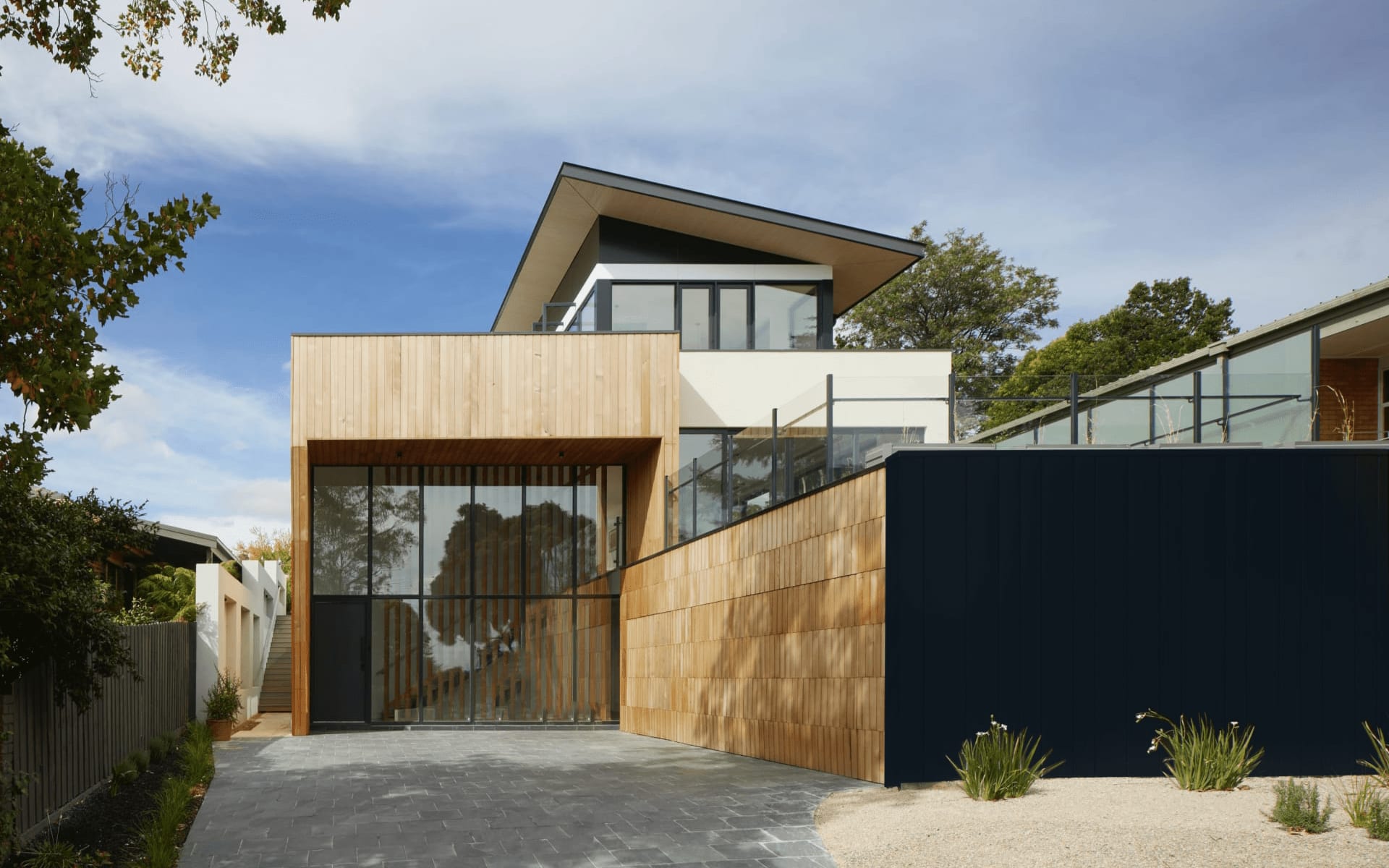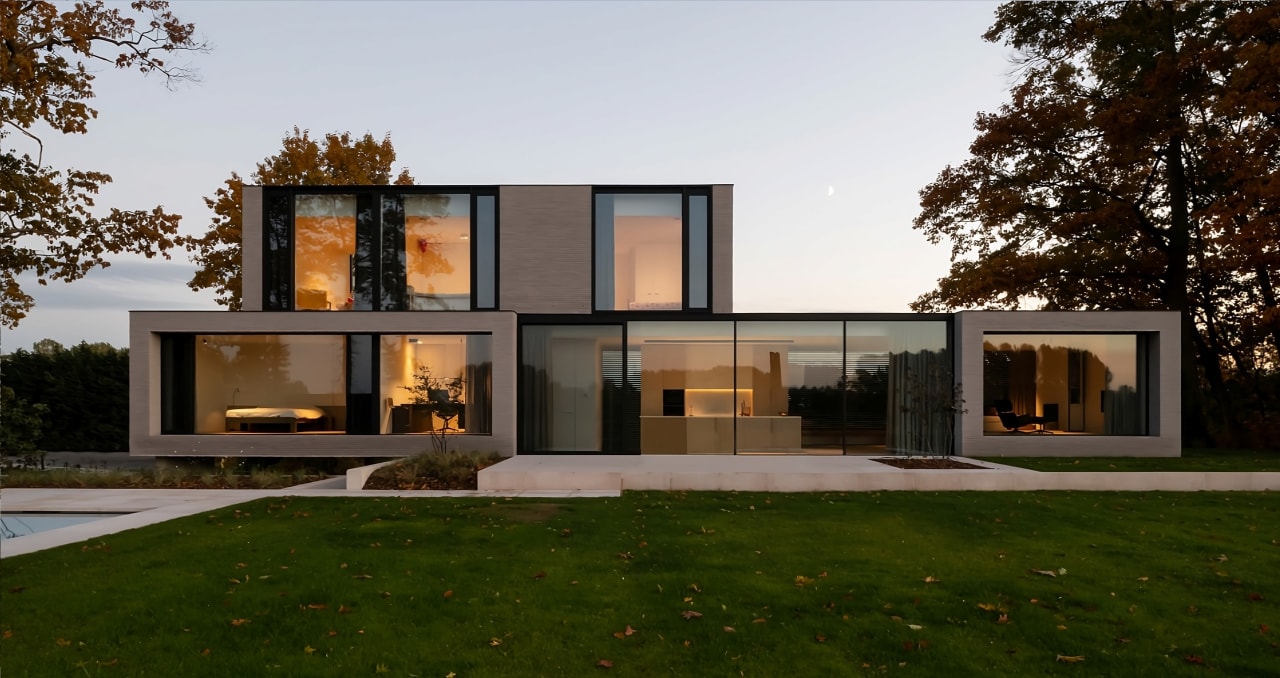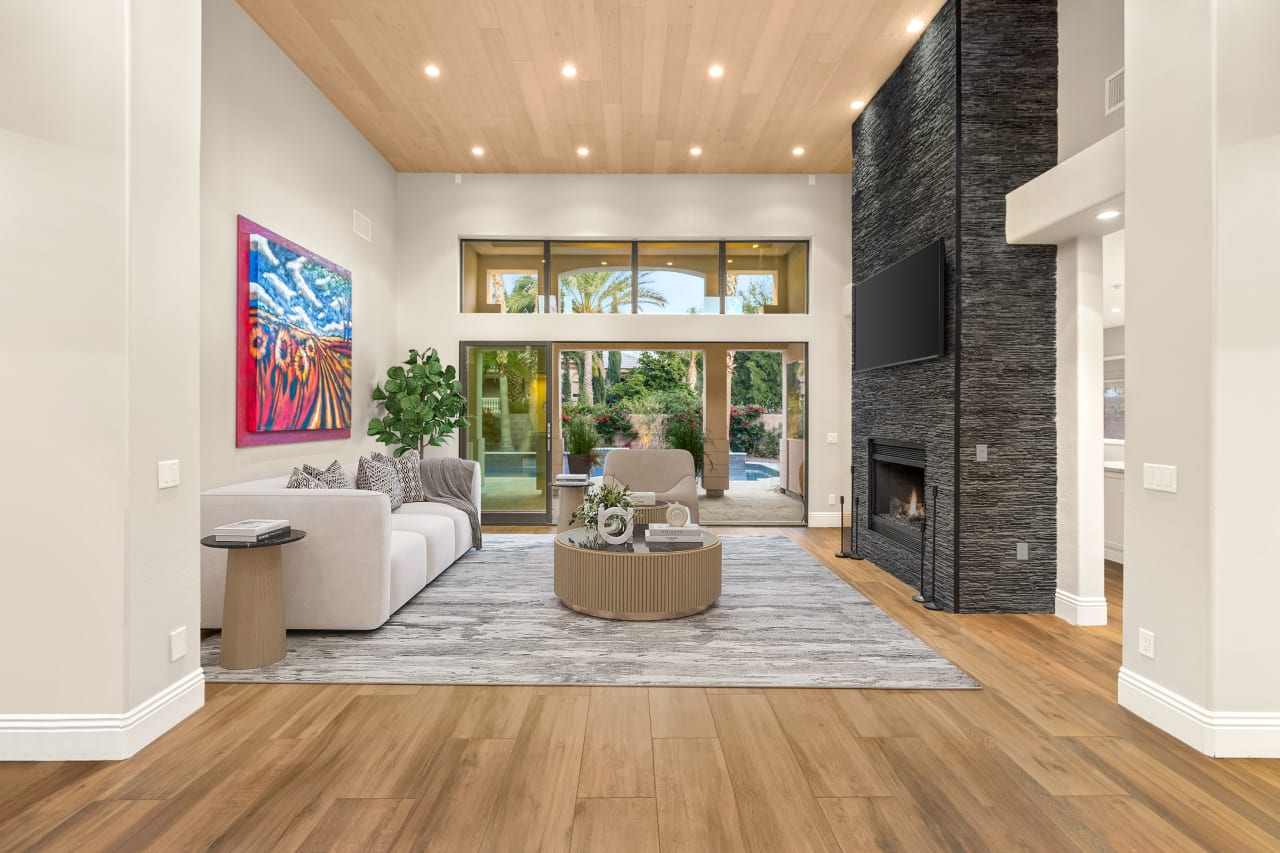Industrial interior design
You may associate industrial with cold concrete, lifeless factories, and dull colors. Despite this, industrial design can be gorgeous and is one of our favorite design styles. Knowing the elements of an industrial style interior design may help you improve your own space. Industrial architecture and interior design for homes have emerged as two distinct but interconnected fields, reflecting a growing trend in contemporary design. These fields embrace a unique aesthetic that harmoniously blends functionality with raw, utilitarian elements, resulting in spaces that are not only visually striking but also exceptionally practical.
INDUSTRIAL ARCHITECTURE
Characteristics: Industrial architecture is distinguished by its iconic elements, including exposed brick walls, steel beams, large windows, and open floor plans, which not only define the aesthetic and design style but also the history of the buildings. The exposed brick walls show the marks of time and large windows flood the space with natural light and connect the indoors with the surrounding environment. Conventionally industrial designs tend to have exposed concrete/brick walls, but you don’t have to get a remodel just to fit this design. Painting walls white, dark green, or chalkboard black works just fine. If you don’t feel like changing up your walls, adding metal wall art or installing a dark chalkboard can work well.
Materials: In industrial design, materials like steel, concrete, glass, and reclaimed wood are chosen for their durability, raw aesthetic, and timelessness. As you would expect, industrial design incorporates a lot of metal pieces. Exposed iron pipes, chrome lamps, and copper frames are just some of the touches you can add to go with the theme. Plus, these materials are often left in their natural state or minimally finished to preserve an authentic industrial look and feel. Reclaimed wood adds warmth and history to the design, while the versatility of these materials allows for a wide range of possibilities. For example, wooden floors, concrete floors, or a brick wall add to industrial interiors.
Open Industrial Spaces: Open spaces, a hallmark of industrial design, not only enables creative freedom in interior aesthetics but also facilitate the seamless integration of architectural elements of industrial style such as exposed brick and steel components, as previously explained. Beyond mere design aesthetics, the intentional architectural layout underscores the significance of spacious environments, shaping them into dynamic hubs that foster innovation, collaboration, and a genuine reflection of the industrial ethos. In essence, the marriage of open spaces and industrial architecture not only pays homage to historical roots but also serves as a blueprint for environments that cultivate creativity and efficiency within the industrial decor.
Large Windows: Large windows are a defining feature of modern industrial architecture, known for their ability to flood interior spaces with an abundance of natural light, seamlessly bridge the gap between indoor and outdoor environments. Typically, these windows have sleek and minimalist framing, designed to accentuate the industrial aesthetic, further enhancing the overall appeal of such structures. Industrial lighting means using rustic elements like metal pipes and other raw materials that highlight the large windows.
Exposed Services: Rather than concealing pipes, ducts, and electrical systems, industrial architecture embraces these elements as part of the design, showcasing their functionality and contributing to the aesthetic. Beams, exposed pipes, and more of the home are designed to work with the space instead of being hidden within it.
INDUSTRIAL Interior Design
Dark/Neutral Tones: When it comes to nailing that industrial vibe in your design, think about those gritty, urban colors we all associate with the good ol' industrial era. You know, the grays, blacks, and whites that scream "concrete jungle." A touch of Brown will also give your industrial kitchen that touch of earthiness. And, oh boy, don't forget dark green – it's an unexpected winner. Sure, you can toss in some lighter shades for a pop, but trust me, the neutrals work their magic best. You can paint the walls or accent pieces Gray, while black, is your edgy go-to. White brings in that clean, crisp vibe, and the earthy tones? They're the secret sauce, bringing warmth and balance to your industrial design. These colors play nice with those rugged industrial materials, giving you that authentic and visually captivating industrial-inspired space.
Simple, Comfy Furniture: Just because your room is industrial style doesn’t mean you can’t cozy up. In fact, this design tends to have plush, simple furniture. You can make them match the neutral/dark color scheme or add a touch of color. Furniture that compliments industrial interior design embodies rugged, functional, and minimalist aesthetics. Key furniture pieces include metal-framed chairs, stools, and tables, often with a weathered finish, as well as reclaimed wood furniture to add warmth. Leather upholstery on sofas and armchairs provides a touch of luxury, while minimalism, vintage finds, exposed hardware, and Edison bulb lighting complete the look. The industrial color palette of neutrals and distressed finishes on furniture items contribute to the overall utilitarian and authentic design of an industrial living room, along with industrial accents like metal wall art, vintage signage, and factory-style wall clocks.
Contrast: Black and white, old and new, conventional and unique, manufactured and hand-made: industrial design embraces the contrast between such elements. Incorporating contrast can add visual balance to your space. For instance, a contemporary, predominantly black-and-white living room adorned with mass-produced furniture can be transformed into a captivating, harmonious space by incorporating a vibrant, hand-painted mural or a colorful, naturalistic painting that stands out as a focal point. This contrast adds a touch of uniqueness and artistry, breaking the monotony and infusing the room with personality. Industrial design blends contrasting elements to create visually captivating yet functional spaces, showcasing the beauty of unconventional unions.
Embracing Industrial Interior Design
Industrial interior design offers a refreshing departure from conventional notions associated with industrial spaces. It's a style that effortlessly merges functionality with raw, utilitarian elements to create visually striking and exceptionally practical living spaces.
From exposed brick walls to steel beams and large windows, industrial architecture showcases iconic features that define its unique aesthetic. Moreover, the use of durable materials like steel, concrete, glass, and reclaimed wood underscores the style's raw aesthetics and timeless allure.
If you're looking to transform your space into an industrial-inspired haven, embrace the contrast, incorporate simple yet comfy furniture, and play with dark and neutral tones to achieve that authentic industrial vibe!
Further reading:
- http://www.home-designing.com/industrial-style-living-room-design-ideas-tips
- http://www.home-designing.com/industrial-style-bedroom-design-ideas-tips
- https://onekindesign.com/2014/09/12/50-most-phenomenal-industrial-style-living-rooms/
For more information about huntington & ellis, A Real Estate Agency or to read more of our blogs visit huntingtinandellis.com






